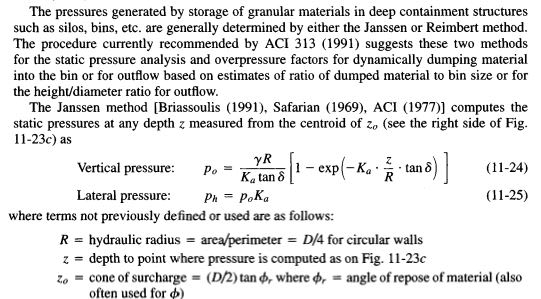Hi All
Please see the sketch below, note the narrow backfill between the rock and the basement retaining wall, what is the best way of estimating the lateral earth pressure at the bottom of the retaining wall?
Would it be acceptable to idealize the area hatched in red like a silo and use Janssen's method with K[sub]0[/sub] instead of K[sub]a[/sub] and R = W width of the backfill? ( see second clip below taken from Bowels - Foundation analysis and design)
Note, the structure is not located in a seismic area.
Thanks.


Please see the sketch below, note the narrow backfill between the rock and the basement retaining wall, what is the best way of estimating the lateral earth pressure at the bottom of the retaining wall?
Would it be acceptable to idealize the area hatched in red like a silo and use Janssen's method with K[sub]0[/sub] instead of K[sub]a[/sub] and R = W width of the backfill? ( see second clip below taken from Bowels - Foundation analysis and design)
Note, the structure is not located in a seismic area.
Thanks.


